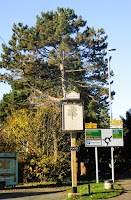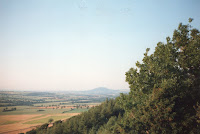Philippa Langley was the catalyst of the dig that found Richard III in Leicester. In particular, she played an invaluable role in getting the city council enthused by the project. Without her intervention, it would not have agreed to the excavation of Britain's most famous car park.
But she is not "the historian who found Richard III," as you so often see her described. The old boy was found by archaeologists from the University of Leicester.
For a fair account of the dig, I recommend a History Extra podcast with the archaeologist and author Mike Pitts. It was recorded just as the film The King in the Car Park was released, and as Pitts foresaw, that film has led to trouble.
He later gave his own views on the fairness of the way the film paints the university. As you will see from the post I wrote at the time, they were pretty forthright.
******
The idea that the Princes in the Tower survived, at least for a time, is an enticing one. Similar stories were told about the children of the last Tsar, Nicholas II, and about Louis XVII, the young son of Louis XVI and Marie Antoinette.
Many supported the claim of Anna Anderson that she was Anastasia, the Tsar's youngest daughter, while Peter Bessell, the Liberal MP of the 1960s, supported a man who claimed to be the Tsarevich Alexei.
This blog's hero Vaughan Wilkins wrote a novel. A King Reluctant, which imagined Louis XVII had been rescued and sent to Britain. This was filmed as Dangerous Exile, and as it was a British film of the 1950s, the boy was played by Richard O'Sullivan.
In recent years DNA fingerprinting - another breakthrough by the University of Leicester - has shown the the conventional wisdom was correct. Nicholas II's children all died with him at Yekaterinburg. Louis XVII died at the age of 10 while a prisoner at the Paris Temple.
I didn't find last weekend's documentary Philippa Langley and Robert Riner convincing, but the evidence that Richard III murdered the Princes in the Tower is not overwhelming. The boys just faded from view and the circumstantial case against Richard is strong.
Some commentators in the press, annoyed by Langley (as it easy to be), have leant too strongly on the discovery of two children's skeletons in the Tower of London in 1674 and their burial in an urn at Westminster Abbey.
My impression is that there is much scepticism among historians about the identification of these bones as the remains of the Princes in the Tower. And the fact that the Royal Family and the Westminster Abbey authorities have resisted calls for the opening of the urn in recent years suggests there is a worry that tests would reveal that it does not contain royal remains. What would they do with the bones then?
For a better presentation of the case for the survival of the Princes in the Tower, listen to Matthew Lewis on the latest History Rage podcast.























